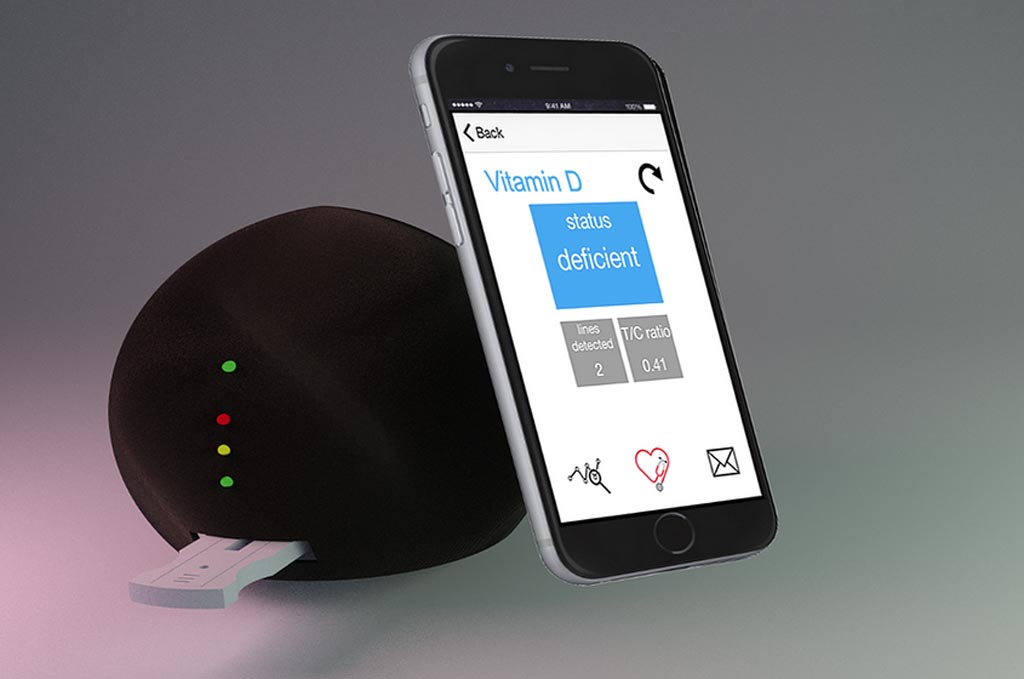Rapid POC Assay Detects Micronutrient Deficiencies
By LabMedica International staff writers
Posted on 19 Dec 2017
A technology that could transform the way nutritional deficiency testing is done worldwide is based on a novel 15-minute point-of-care assay system that enables determination of vitamin A, iron, and inflammation status.Posted on 19 Dec 2017
Micronutrient deficiencies such as vitamin A and iron affect a third of the world’s population with consequences such as blindness, higher child mortality, anemia, poor pregnancy outcomes, and reduced work capacity. Many efforts to prevent or treat these deficiencies are hampered by the lack of adequate, accessible, and affordable diagnostic methods that can enable better targeting of interventions.

Image: The NutriPhone is a mobile diagnostics platform for monitoring individual vitamin and micronutrient levels was adapted to work with a rapid point-of-care assay system (Photo courtesy of Cornell University).
To rectify this situation, investigators at Cornell University (Ithaca, NY, USA) developed a rapid diagnostic test and mobile enabled platform for simultaneously quantifying iron (ferritin), vitamin A (retinol-binding protein), and inflammation (C-reactive protein) status.
This method combines multiple florescent markers and immunoassay approaches in a single test, allowing accurate quantification in 15 minutes even though the physiological range of the markers of interest vary over five orders of magnitude. The investigators reported sensitivities of 88%, 100%, and 80% and specificities of 97%, 100%, and 97% for iron deficiency (ferritin), vitamin A deficiency (retinol-binding protein) and inflammation status (C-reactive protein), respectively.
The novel test system was deemed suitable for point-of-care use in both resource-rich and resource-limited settings and can be read either by a standard laptop computer or with the NutriPhone dedicated smartphone application.
“We must address the micronutrient problem at the individual level – which is a much easier task. The key to solving these micronutrient deficiency problems is early detection and early intervention,” said senior author Dr. David Erickson, professor of mechanical engineering at Cornell University. “Having information, we can change or supplement diets, if we know who is deficient – and we are more likely to prevent complications, and keep children and women healthy.”
The rapid diagnostic system was described in the December 4, 2017, online edition of the journal Proceedings of the [U.S.] National Academy of Sciences.
Related Links:
Cornell University













